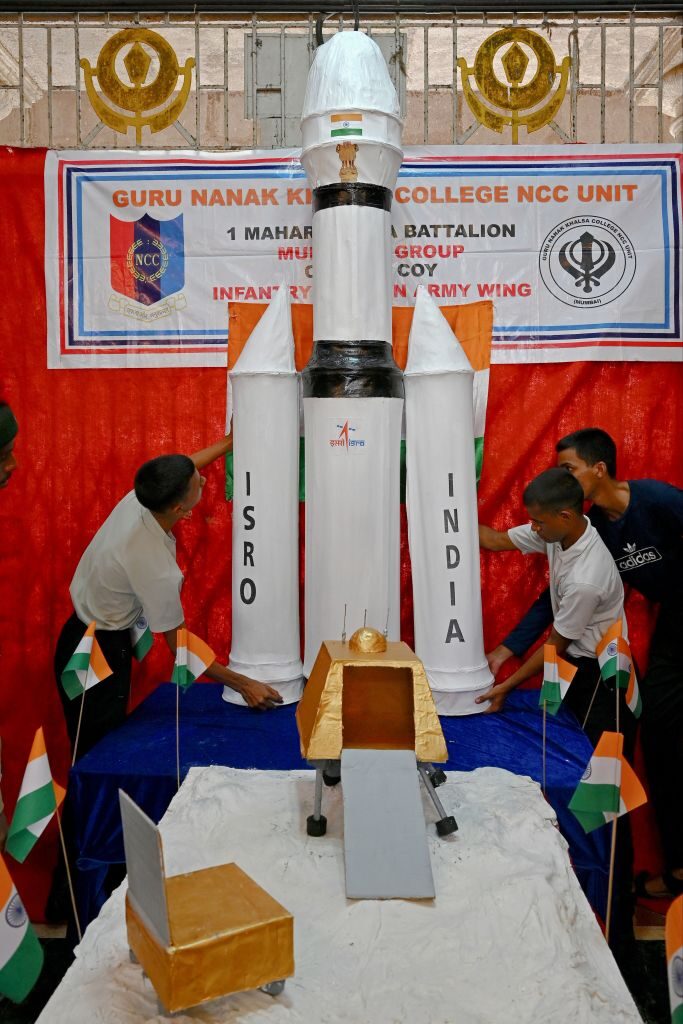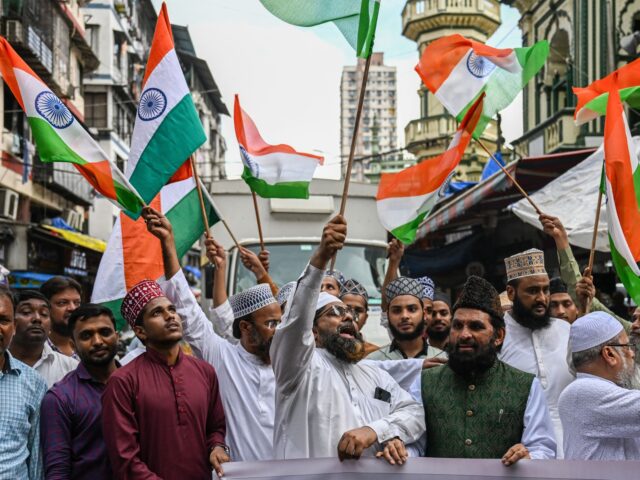India’s Chandrayaan-3 mission deployed its Pragyan moon rover on Thursday, beginning its cautious exploration of the lunar south pole while millions of Indians watched its livestream and celebrated the historic accomplishments of the mission.
The Indian Space Research Organization (ISRO) said on Thursday morning that “all activities are on schedule” and “all systems are normal.” Various crucial modules on the lander were activated in addition to deploying the rover.
Here is how the Lander Imager Camera captured the moon's image just prior to touchdown. pic.twitter.com/PseUAxAB6G
— ISRO (@isro) August 24, 2023
India won the race to the Moon’s south polar region on Wednesday, three days after Russia’s competing spacecraft Luna-25 crashed due to a thruster misfire. India’s heavier lander carried a moon rover, a piece of gear omitted from Russia’s mission to reduce weight.
The Pragyan rover is rated for 14 days of exploration, or one lunar day. Mission commanders hope the rover might catch more sunlight and earn extra days of exploration on a second lunar day. If that bit of good fortune comes to pass, the rover will be sent further away from the Vikram lander. A major goal of the mission is confirming the presence of water ice on the lunar surface, which could be very helpful for future construction and missions beyond the Moon.
ISRO chief Sreedhara Somanath said both the lander and rover “are working very well,” but the rover will now face some challenges as it moves across the surface of the Moon.
“The mechanisms, the moving items … can get entangled with the dust there. It can get into the moving parts and jam them, the bearings of the system may not work, the motors may not work,” he said.
Somanath was optimistic these challenges could be overcome.

Students of Guru Nanak Khalsa College set up a model of India’s Chandrayaan-3 spacecraft during an event to celebrate its successful lunar landing, in Mumbai on August 24, 2023. (INDRANIL MUKHERJEE/AFP via Getty Images)
“All this creates problems in those mechanisms … so let us see how it goes. We will face it … that’s why we are exploring. If everything is known, what is the fun in doing it?” he said.
Indians celebrated the achievement of joining the exclusive lunar landing club and becoming the first nation to land in the south polar region.
“This moment is unforgettable. It is phenomenal. This is a victory cry of a new India,” Prime Minister Narendra Modi said from the sidelines of the BRICS summit when the lander touched down.
“India is now on the moon. India has reached the south pole of the moon. No other country has achieved that. We are witnessing history,” Modi said while waving an Indian flag.
The Associated Press (AP) described Indians crowding around television sets, praying for success in temples and along river banks, and erupting in jubilation when the lander settled on the lunar surface:
A man waved a banner reading ’’The Moon in India’s arms.”
Shrini Singh, a New Delhi resident, said she got goosebumps. ’’It’s a very happy moment … you can see the energy. It’s beyond words.”
Mitakshi Sinha, a student, said the successful mission motivated her. “And now I also want to be part of ISRO,” she said, referring to the country’s space agency.
Reuters reported Indians are glued to the livestream from the Chandrayaan-3 mission. Schools have organized watch parties and public venues are filled with people watching the mission on big-screen TVs.
Indian newspapers ran headlines such as “The Moon Is Indian” and “India Lights Up the Dark Side of the Moon.”
The Times of India (TOI) on Thursday invited ISRO to “take a bow” for “the most significant Indian scientific achievement.”
“At this moment, consider what Isro’s dogged persistence and achievements mean to India’s scientific community. On shoestring budgets, they have enhanced India’s capabilities in communication satellites and remote sensing. It’s a remarkable homegrown effort,” TOI said.
Foreign Policy suggested India’s great achievement could have some interesting ramifications for its delicate diplomatic relationship with both America and Russia:
India and Russia – partners on Earth – have competed to become the first country to land on the lunar south pole; a Russian attempt failed on Sunday. The presence of water, which could be refined into rocket fuel in the future, suggests an opportunity for other countries to use the lunar south pole region as a base for deeper space exploration.
Perhaps in anticipation of such competition, in 2020 the United States established the Artemis Accords, which aim to promote space cooperation through shared rules and principles. Many U.S. allies and partners have signed on, including India during Modi’s visit to Washington in June. China and Russia have not. With geopolitical competition in space poised to intensify, it could certainly change the way those on Earth perceive the moon – and beyond.
The UK Guardian predicted the moon landing would cement India’s position as a “low-cost provider of space launch services,” a market that is projected to grow from $9 billion today to over $20 billion by 2030.

COMMENTS
Please let us know if you're having issues with commenting.